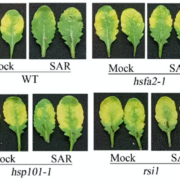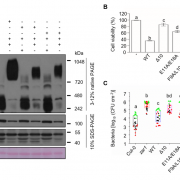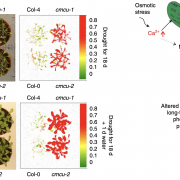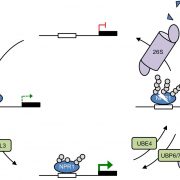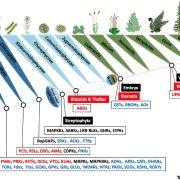Chloroplast redox state changes mark cell-to-cell signalling in the hypersensitive response (New Phytol)
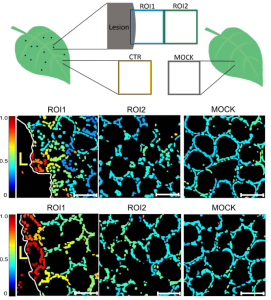 Programmed cell death (PCD) plays roles in both developmental and environmental responses across plant species. During pathogen attack, the hypersensitive response can limit spread of infection by orchestrating an organised death of cells around the infection area. A recent study by Lukan et al. demonstrated that the chloroplast redox state fluctuates depending on the proximity to the hypersensitive response death zone, confirming a role of ROS in signalling during PCD. Using spatiotemporal analysis of the redox state of potato chloroplasts in response to potato virus Y (PVY) infection, it was found that chloroplasts directly beside the death zone were highly oxidised to prevent plasmodesmata opening, thereby limiting spread of infection. Additionally, isolated mesophyll cells termed “signalling” cells, scattered close to the death zone were identified with moderately oxidized chloroplasts. The presence of these “signalling” cells was reduced in salicylic acid (SA)-deficient, infection-susceptible transgenic plants and were absent from mock-treated plants. These results indicate a role for SA in chloroplast oxidation and resistance signalling away from the death zone, in contrast with the observed SA-independent chloroplast oxidation near to the death zone and associated PCD. This study highlights the intricacies of plant cell-to-cell signalling occurring under biotic stress conditions and encourages researchers to look beyond tissue level to examine cellular molecular activities in situ. (Summary by Orla Sherwood, @orlasherwood) New Phytol. 10.1111/nph.18425
Programmed cell death (PCD) plays roles in both developmental and environmental responses across plant species. During pathogen attack, the hypersensitive response can limit spread of infection by orchestrating an organised death of cells around the infection area. A recent study by Lukan et al. demonstrated that the chloroplast redox state fluctuates depending on the proximity to the hypersensitive response death zone, confirming a role of ROS in signalling during PCD. Using spatiotemporal analysis of the redox state of potato chloroplasts in response to potato virus Y (PVY) infection, it was found that chloroplasts directly beside the death zone were highly oxidised to prevent plasmodesmata opening, thereby limiting spread of infection. Additionally, isolated mesophyll cells termed “signalling” cells, scattered close to the death zone were identified with moderately oxidized chloroplasts. The presence of these “signalling” cells was reduced in salicylic acid (SA)-deficient, infection-susceptible transgenic plants and were absent from mock-treated plants. These results indicate a role for SA in chloroplast oxidation and resistance signalling away from the death zone, in contrast with the observed SA-independent chloroplast oxidation near to the death zone and associated PCD. This study highlights the intricacies of plant cell-to-cell signalling occurring under biotic stress conditions and encourages researchers to look beyond tissue level to examine cellular molecular activities in situ. (Summary by Orla Sherwood, @orlasherwood) New Phytol. 10.1111/nph.18425


